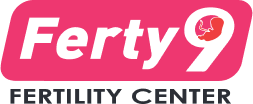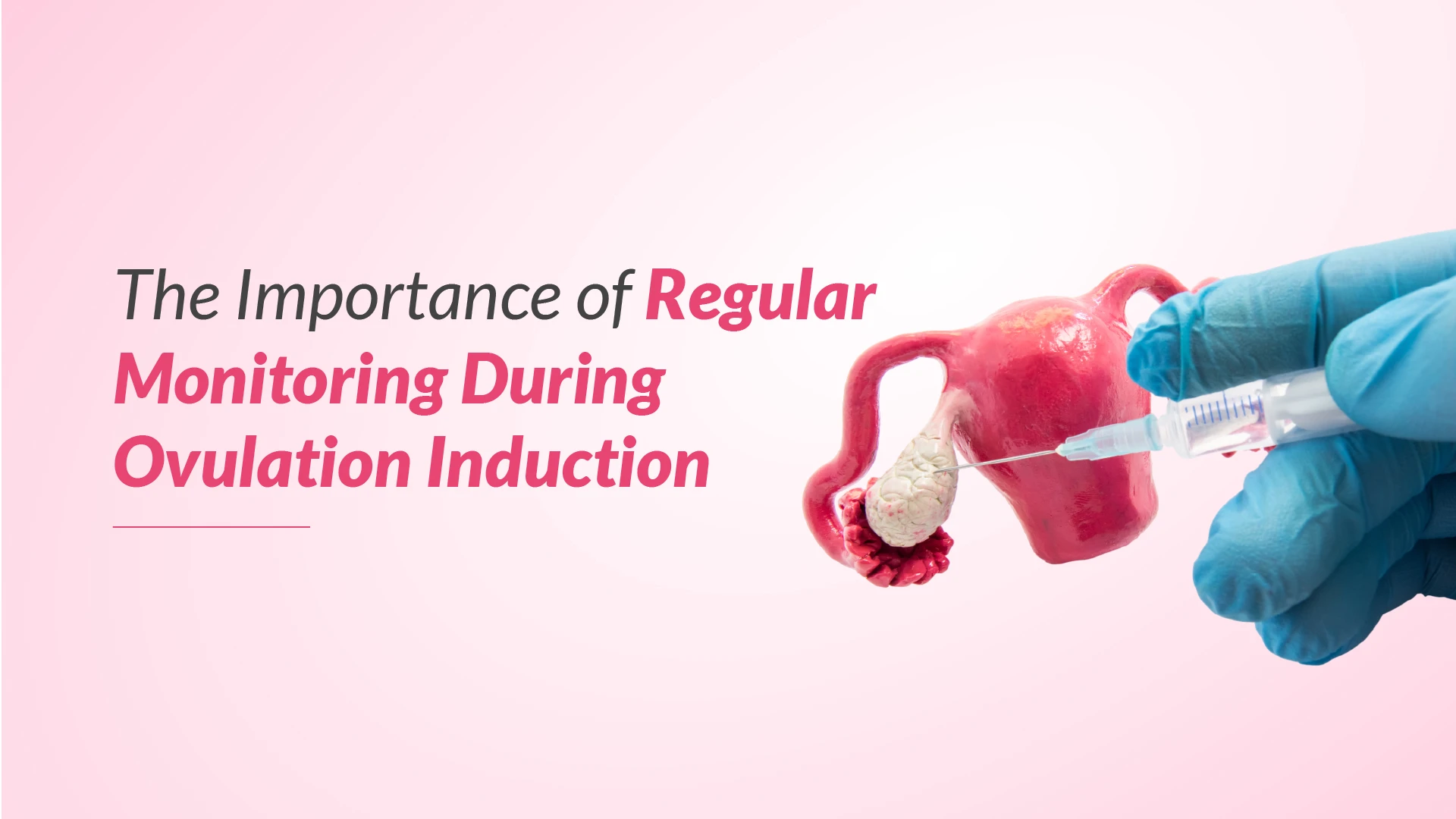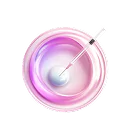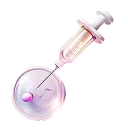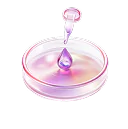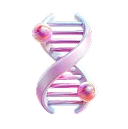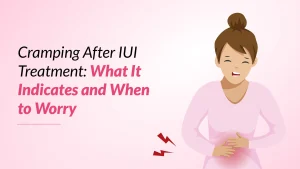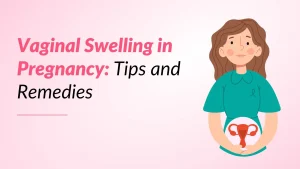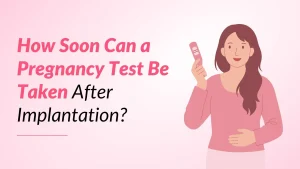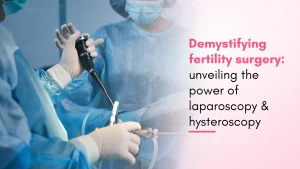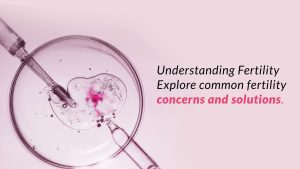Ovulation induction offers a promising path forward for couples navigating fertility challenges. Regular monitoring during this process is crucial, as it provides valuable insights and optimizes treatment effectiveness. Let’s explore how careful observation and timely adjustments can significantly enhance your chances of conception, bringing you closer to your dream of parenthood. Discover how expert monitoring can turn hope into reality.
What is Ovulation Induction?
Ovulation induction is a medical intervention that helps enhance ovulation patterns or increase the size of the recruited follicle. One of the most popular methods for treating infertility is ovarian stimulation.
Ovarian stimulation promotes the development of multiple follicles within the ovaries, each containing an egg, and this process is stimulated using hormonal therapy. These medications are intended to cause ovulation in women who do not naturally ovulate, usually those who have irregular menstrual cycles. This procedure improves the possibility of fertilization and pregnancy.
Now you can use our Latest Ferty9 Ovulation Calculator to know your Ovulation and Fertility window.
Why Choose It?
Ovulation induction can be very helpful for women whose anovulation, or PCOS, prevents them from ovulating, making it difficult for them to become pregnant. Before initiating ovulation, doctors attempt to determine the cause for the absence of ovulation. Treatment is frequently based on the underlying cause.
The rationale for opting for ovulation induction is:
- Irregular menstrual cycles
- Unexplained causes of infertility
- Polycystic ovary syndrome (PCOS)
- Controlled ovarian hyperstimulation in assisted reproductive technology (ART) cycles
- Superovulation in intrauterine insemination (IUI)
Without medical assistance, these problems may make it difficult to become pregnant. They interfere with women’s ovulation cycles. Consequently, ovulation induction aids in controlling the ovulation process.
Classification of Anovulation
Anovulation refers to the lack or absence of ovulation. Anovulation is usually the consequence of an imbalance in the hormones, and it’s a common cause of infertility. Anovulation might also be indicated by irregular menstrual cycles.
The hypothalamic-pituitary-ovarian (HPO) axis is responsible for the regular menstrual cycle as well as paracrine and endocrine processes. Anovulation occurs as a result of HPO axis dysfunction, and it has been classified by WHO (World Health Organization) as
- WHO class 1: Hypogonadotropic hypogonadism ( Low gonadotropin levels)
- WHO class 2: Normogonadotropic hypogonadism (normal gonadotropin levels)
- WHO class 3: Hypergonadotropic hypogonadism (premature ovarian failure )
- WHO class 4: Hyperprolactinemia (increased prolactin)
Ovulation induction medications are crucial in treating anovulation by directly stimulating the hypothalamus, promoting the development of dominant follicles, and supporting endometrial growth. A secondary therapy that is used as an adjuvant is laparoscopic ovarian drilling which is not being practised on regular basis
Understanding Controlled Ovulation Stimulation (cos)
A procedure known as “Controlled Ovarian Stimulation” (COH) involves using fertility drugs to stimulate the ovaries and create ovulatory follicles. Usually, injectable fertility hormones and oral fertility medications are used in combination to induce the ovary to develop mature follicles.
Depending on the type of injections used for controlled ovarian stimulation, protocols may be roughly divided into two categories: agonist and antagonist protocols. Creating a group of growing follicles and delaying premature spontaneous ovulation are the two primary objectives of COS. There are three main components of controlled ovarian stimulation (COS)
- Exogenous gonadotropins (from outside the body) promote multifollicular growth.
- To decrease pituitary activity and avoid early ovulation, cotreatment with gonadotropin-releasing hormone (GnRH) agonists or antagonists is recommended.
- Final oocyte maturation is triggered 36–38 hours before oocyte retrieval.
Medicines Used for Ovulation Induction
The medications listed below are typically used to induce ovulation.
- Letrozole is the first line of choice that helps in ovulation induction in infertile PCOS women.
- The most commonly used medication at present are injectable gonadotropins (HMG & FSH)
- Clomiphene citrate also aids in the ovulation induction but not used routinely now adays.
Monitoring Techniques in Ovulation Induction
Regular monitoring is required to evaluate endometrial thickness, hormone levels, and follicle growth during ovulation induction. Transvaginal ultrasounds and hormone blood testing are often part of this procedure. Depending on how the patient responds to the medicine, different monitoring visits will occur at different intervals.
During follicle monitoring, we measure the endometrial thickness, growth rate, and total number of follicles. In addition, we look for structures such as polyps, hydrosalpinges (fluid blockage in the fallopian tube), cyst development, and fluid in the endometrium. Once the lead follicle reaches the optimal size, a trigger injection is given to help with ovulation.
How Often Do I Have to be Monitored During Ovulation Induction?
An examination will be performed after few days of starting medication to ensure that you are developing the right amount of follicles. Some patient might need 2-3 doses of gonadotropin injections . Every patient experiences a unique cycle.
Managing the Risk of Ovarian Hyperstimulation Syndrome
The complications associated with assisted reproductive technology are
- Ovarian hyperstimulation syndrome (OHSS)
- Breast and ovarian cancer
- Multiple pregnancies
- Unexpected pregnancy loss
- Congenital defects or birth defects, that are extremely rare.
OHSS is characterized by ovarian neoangiogenesis, increased capillary permeability, and cystic growth of the ovaries. It is acknowledged in two ways.
- The early form of OHSS (occurs a few days after the hCG shot that triggers ovulation)
- The late form (10 days after hCG)
The clinical features include acute abdominal pain, nausea, vomiting, hypotension, electrolyte imbalance, and acute renal failure. This can lead to serious conditions such as dyspnea, deep venous thrombosis, and pulmonary embolism. The incidence of OHSS can be prevented by reducing exposure to gonadotropins, albumin administration, hydroxyethyl starch solution, GnRH antagonist protocols, insulin-sensitizing agents, dopamine agonists, and any nonsteroidal anti-inflammatory administration.
Personalized Treatment Plans
The ovulation induction is done in the case of IUI (Intrauterine insemination). Whereas controlled ovarian stimulation is done in Invitro fertilization (IVF).
Prepared sperms are inserted into the uterus during IUI, and follicular tracking is carried out to ascertain the ideal time for the treatment. IUI is a popular option for infertile couples with unidentified male components or infertility; it is also utilized when ovulation induction is required. IVF is a high-tech fertilization procedure in which sperm and eggs fuse together in a lab and are then inserted into the uterus at a desired level of development. In IVF treatment, follicular tracking plays a key role in assessing ‘ right degree of follicular development.
Handling Challenges: Failed Ovulation Induction
Ovulation induction success rates are influenced by several variables, including age, underlying pathology, diagnosis, and so on. Nevertheless, between twenty and twenty-five percent of women had success. Conceiving frequently takes more than one treatment cycle. Some people, meanwhile, will not become pregnant even after several attempts. Your doctor may suggest in vitro fertilization (IVF) if you have experienced many cycles of ineffective ovulation induction.
Conclusion
Ovulation induction is thought to be essential in treating anovulatory infertility in infertile couples. Infertility treatment for couples is said to revolve around identifying the kind of anovulation, evaluating ovarian reserve, assessing male and female investigation reports, and planning the right course of action for drugs and procedures.
Treatment plans must be streamlined to achieve better results. To enhance the reproductive outcomes for infertile couples, diligent planning, and consultation with other medical specialists treating the female are therefore advised. While the journey to parenthood may have its challenges, at Ferty9 Fertility Center, we’re dedicated to turning your dreams into reality. Our expert team collaborates with medical specialists to optimize outcomes, helping countless couples overcome infertility and achieve their dreams of parenthood with advanced medical support and dedicated care.

